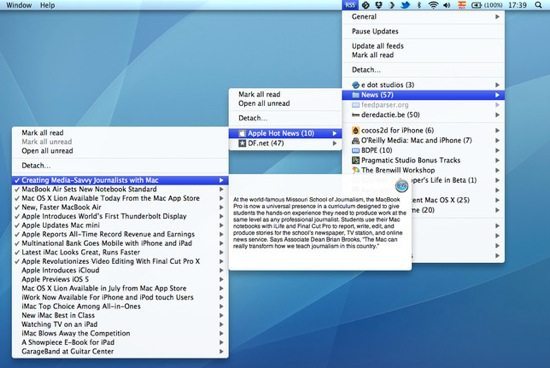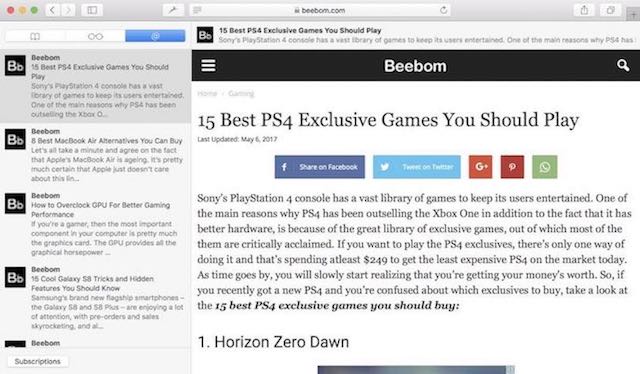


In this case the document conforms to the 1.0 specification The XML version and the character encoding used in the document. The first line in the document - the XML declaration - defines RSS documents use a self-describing and simple syntax.
RSS BUILDER FOR MAC FREE
Tip: Read our RSS Publishing chapter to view free RSS aggregation services. Information about the feed so clients can link to documents that interests them. Each day the aggregator searches the registered websites for RSS documents, verifies the link, and displays So, to be a part of it: First, create an RSS document and save it with an. With RSS, you register your content with companies called aggregators. RSS is used to share content between websites.

However, this does not matter too much for ordinary users,īut by using web standards it will be easier for persons and applications to exchange data. The idea behind RDF was to help create a Semantic Web. RSS 1.0 is the only version that was developed using the W3C RDF (Resource Description Framework) standard.
RSS BUILDER FOR MAC UPDATE
Webmasters who seldom update their web sites do not need RSS! Web-rings with similar information can easily share data on their web sites to make Since RSS data is small and fast-loading, it can easily be used Often called a News feed or RSS feed) they canĬheck your site faster using an RSS aggregator (a site or program that This may be too time-consuming for many users. Without RSS, users will have to check your site daily for new

RSS BUILDER FOR MAC HOW TO
XSD Schema XSD Introduction XSD How To XSD XSD Elements XSD Attributes XSD Restrictions XML DTD DTD Introduction DTD Building Blocks DTD Elements DTD Attributes DTD Elements vs Attr DTD Entities DTD Examples XQuery Tutorial XQuery Introduction XQuery Example XQuery FLWOR XQuery HTML XQuery Terms XQuery Syntax XQuery Add XQuery Select XQuery Functions XSLT Tutorial XSLT Introduction XSL Languages XSLT Transform XSLT XSLT XSLT XSLT XSLT XSLT XSLT Apply XSLT on the Client XSLT on the Server XSLT Edit XML XSLT Examples XPath Tutorial XPath Introduction XPath Nodes XPath Syntax XPath Axes XPath Operators XPath Examples XML DOM DOM Introduction DOM Nodes DOM Accessing DOM Node Info DOM Node List DOM Traversing DOM Navigating DOM Get Values DOM Change Nodes DOM Remove Nodes DOM Replace Nodes DOM Create Nodes DOM Add Nodes DOM Clone Nodes DOM Examples XML AJAX AJAX Introduction AJAX XMLHttp AJAX Request AJAX Response AJAX XML File AJAX PHP AJAX ASP AJAX Database AJAX Applications AJAX Examples XML Tutorial XML HOME XML Introduction XML How to use XML Tree XML Syntax XML Elements XML Attributes XML Namespaces XML Display XML HttpRequest XML Parser XML DOM XML XPath XML XSLT XML XQuery XML XLink XML Validator XML DTD XML Schema XML Server XML Examples XML Quiz XML Certificate


 0 kommentar(er)
0 kommentar(er)
